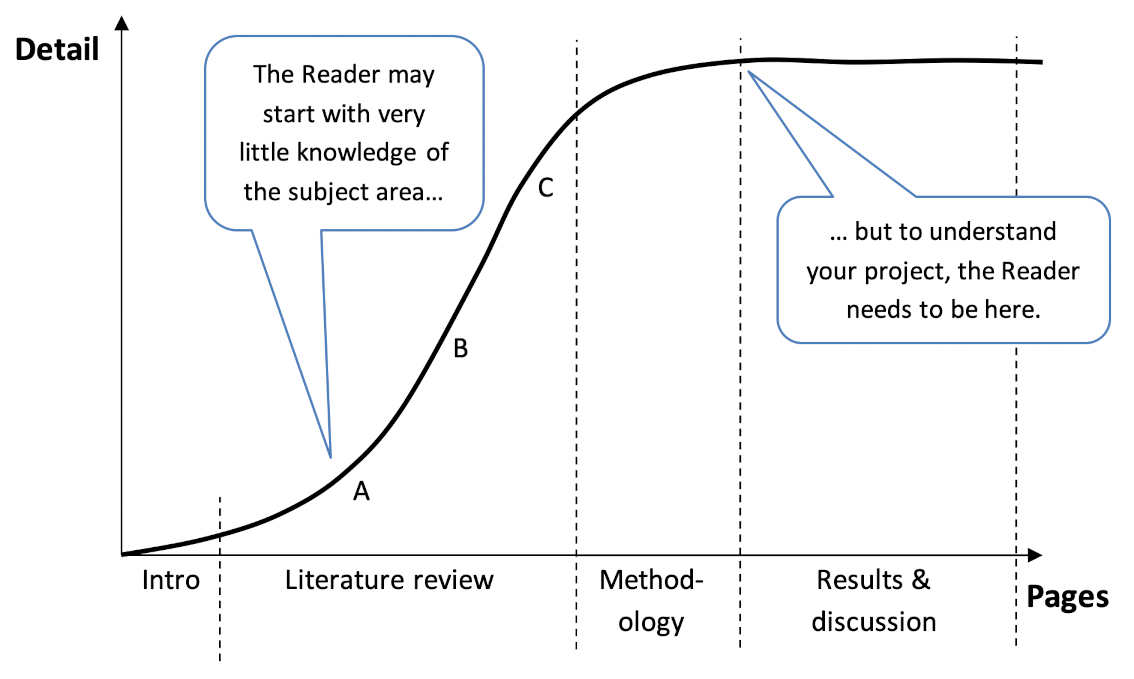The purpose of the literature review
The literature review has two purposes:
present_to_all
- To provide the reader with the background on the topic so that it is possible to understand the more detailed parts that follow.
- To develop the reasons for the project
To satisfy the first purpose, your job is to set out the basics of the subject area early in the literature review at point A on the curve and to provide more detail and focus as the literature review proceeds. At point A, therefore, you will mainly rely on books for standard definitions and explanations of basic pieces of theory. As your explanation proceeds, you need to develop some detail in the specific topic that your project addresses, and around point B you will start to refer to current research work in the area. This will mean making more use of material from research articles that you have found through your literature search. By the time you get to point C, you should be focussing your discussion on the specific problem that your project addresses, and using a few specific recent references that represent the best information about the topic that is currently available. It is likely that you will refer to these references again in your results and discussion chapter.
Fig. 1 represents the content of a typical final report with pages on the horizontal axis, and level of detail on the vertical axis. The specific structure of the report will depend on the requirements of the specific project. The curve represents the journey that the reader takes through the work.

To satisfy the second purpose, the literature review needs to have a clear focus, and its structure should lead the reader to the aim of the project through a series of refinements in which you draw the reader’s attention to the important issues. By the time the reader reaches point C, the nature of the problem should be fully explained, and the purpose of the project should be clear. It is often a good idea at this stage to re-state the aims of the project which were probably set out in the introduction, because now the reader is fully equipped to understand them.